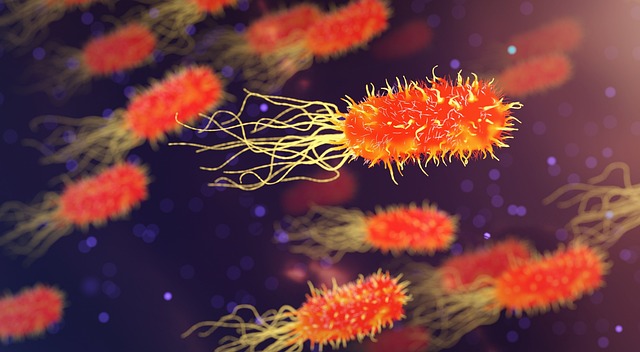|
|
Yes, they can. The first bacteria capable of decomposing nylon were discovered in the 1970s. However, it took almost half a century to discover others that can break down PET (Polyethylene terephthalate). Will they ever consume our trash? There’s already such a recycling facility in France.
The Story Begins in 2001 at a Landfill
in 2001 Japanese scientists, led by Prof. Kohei Oda from the Kyoto University of Technology, were searching for bacteria at a landfill that could partially decompose plastics, or synthetic materials. Their goal was to find a chemical compound produced by bacteria that could soften synthetic fabrics.
This search was not unusual. Landfills are full of bacteria, and most microbes derive energy from breaking down complex chemical compounds into simpler ones. The researchers believed that among these microbes, some might be able to degrade synthetic fibers.
To their astonishment, the scientists found a strain of bacteria at the landfill that didn’t just harm plastics—it completely decomposed them.
Why Bacteria That Eat Plastic Surprised Scientists
To understand the surprise, one needs to understand what plastics, often referred to as “synthetics,” are. Chemically, they are polymers, long chains of identical chemical compounds called “mers.” For instance, polyethylene consists of linked mers of ethylene, and polystyrene is made of styrene. Rubber is polyisoprene, consisting of chains of isoprene.
The durability of synthetic materials is partly due to the fact that their compound chains are too long for bacteria to break down. Occasionally, microbes can break these chains, which is what the Japanese researchers were hoping for, but generally, they are indigestible for them.
Previously, only one strain of bacteria was known, discovered in 1976 in the wastewater of a Japanese nylon factory, that could decompose polycaprolactam, or nylon. In 1995, it was also shown that, in the absence of other food, bacteria from the Pseudomonas genus could also break it down.
This is also why synthetics are such a burden on the environment. Paper and wood are digested by bacteria and fungi. Polymers last for decades until they are affected by the sun. Ultraviolet radiation has enough energy to break chemical bonds, but this is a rather slow process.
A small consolation is that about 2% of plastics floating in the oceans disappear each year due to sunlight, but more is constantly being added.
380 Million Tons of Synthetics Produced Annually
The discovery of bacteria that can decompose synthetic materials gave hope that humanity might somehow cope with the continuous production of plastics.
Every year, we produce an estimated 380 + million tons of synthetic materials, and this number is steadily increasing. By the mid-century, it’s expected to triple. (For comparison, the Empire State Building weights about 365,000 tons).
Global plastics production
Plastic production refers to the annual production of polymer resin and fibers.
Global plastic production with projections, 1950 to 2060
Globally, only 9% of synthetics are recycled. What happens to the remaining 91%? Well, they end up in incinerators and landfills in wealthy countries. In poorer countries, most plastics are discarded anywhere.
Share of plastic waste that is recycled, landfilled, incinerated and mismanaged
They accumulate in the soil, litter rivers, and are carried by currents into seas and oceans. Scientists estimate that 5 billion tons of plastics are now lingering in the environment.
Plastics and Microplastics
Many microscopic fragments of plastic waste float in the air and fall with the rain. These are mainly tiny particles of synthetic fabric fibers and wear layers of car tires. Some of them are fragments resulting from the breakdown of larger plastic waste.
Typically, these particles are between 15 and 250 micrometers, roughly the thickness of a human hair. They are much larger than dust particles, which are usually below 10 micrometers, but they are so light that the wind carries them much further.
Microplastic particles have even been discovered high in the Himalayas. They’ve been found in drinking and bottled water, store-bought sea salt, and fish.
The smallest particles can penetrate from the lungs and intestines into the bloodstream. However, it’s unclear what impact they have on the human body. Scientists are currently unsure if these particles harm us (and if so, how much).
However, many studies indicate that smog dust particles are harmful, so microplastics probably are too.
Why Bacteria Aren’t Yet Eating Our Plastic Trash
If we know that certain bacteria can decompose synthetics, why aren’t we using microbes to get rid of plastics?
Firstly, there’s often a significant time gap between a scientific discovery and the publication of research. For instance, 15 years passed from the discovery of plastic-decomposing bacteria at the landfill to the publication of the research paper (published in 2016). This is partly because research is usually conducted by a small team with limited funding.
Secondly, it’s not a magic wand that makes plastic disappear instantly. Ideonella sakaiensis, the name given to the microbes that decompose synthetic material, takes about seven weeks to break down a two-centimeter plastic fragment weighing only 0.2 grams.
Thirdly, the bacteria discovered by the Japanese researchers produce an enzyme that only decomposes one type of synthetic material: PET (poly(ethylene terephthalate)). PET is one of the most commonly used synthetics, but it’s certainly not the only one. We still don’t know of bacteria that can break down polypropylene, polystyrene, poly(vinyl chloride), or other synthetics.
Lastly, it usually takes quite some time to transition from a scientific discovery to an industrial-scale application. Typically, it’s at least two decades.
Science is a Laborious Process
Can’t we somehow improve the method by which bacteria decompose PET? The problem is, it’s challenging.
Every chemical reaction occurs faster at higher temperatures. However, bacteria can’t be overheated, or they’ll die. Bacteria (and our bodies) break down large chemical compounds (like starch and protein chains) using enzymes. We can isolate the enzyme from bacteria that decomposes synthetic material, but the enzyme itself is a protein. Too high a temperature will also break it down.
Scientists have various ways to address both issues. They can cultivate bacteria, hoping that a subsequent strain (due to mutation) will be resistant to higher temperatures or produce a heat-resistant enzyme. (Frances Arnold was awarded the Nobel Prize in Chemistry in 2018 for “directed evolution”).
Alternatively, bacteria can be modified using genetic engineering. This is, however, quite tedious. A more efficient enzyme was obtained quite recently, in 2022, which decomposes PET much faster than Ideonella sakaiensis and is resistant to high temperatures (up to 70 degrees Celsius). This was achieved by Elisabeth Bell from the University of Manchester as part of her doctoral work.
However, note that this was achieved two decades after the discovery of these microbes at the landfill.
Hunting for Plastic-Eating Organisms
Since 2021, the French company Carbios has been decomposing PET using bacterial enzymes. Although 250 kilograms per day may seem small, it amounts to over 90 tons annually. In this way, PET is broken down into individual “bricks” from which the polymer “chain” or synthetic material can be recreated.
This can be considered recycling, similar to how glass or aluminum is recycled.
Scientists continue to search for other bacteria that can decompose other plastic synthetics. In 2019, a team of South Korean researchers from Gwangju University discovered Bacillus thuringiensis bacteria deep in the soil beneath a landfill, which they suspect can decompose polyethylene. Perhaps the future of plastic recycling lies with insects. In 2017, it was reported that larvae of the greater wax moth (also known as the honeycomb moth) can decompose polyethylene. Earlier, it was reported that mealworm larvae can break down polystyrene. However, insects don’t do this as effectively as bacterial enzymes. (Recent Publication)
Scientists estimate that there are several hundred million, perhaps even a billion, different species of bacteria. We still don’t know most of them. It’s possible that somewhere in the soil or wetlands, there’s a species that will decompose synthetics more efficiently and quickly.
For now, we can only ponder how to reduce the amount of plastic we produce.
Conclusion: The discovery of bacteria capable of decomposing certain plastics offers a glimmer of hope in addressing the global plastic waste crisis. While the process is still in its infancy and has limitations, ongoing research and innovations may pave the way for more sustainable solutions in the future.
FAQ about Bacteria eating Plastic
- Can bacteria decompose plastics?
- Yes, certain bacteria can decompose specific types of plastics, like PET.
- Why was the discovery of plastic-eating bacteria surprising?
- Plastics are durable polymers, and their long chains of compounds are generally indigestible for bacteria.
- How much plastic is produced annually?
- We produce 380 million tons of synthetic materials every year, and this number is increasing.
- What are microplastics?
- Microplastics are tiny particles of plastic waste that float in the air and fall with the rain. They can be found in various environments, including drinking water and seafood.
- Why aren’t bacteria widely used to decompose plastics yet?
- The process is still in its early stages, and there are challenges related to efficiency, specificity of the bacteria to certain plastics, and scaling up the process for industrial use.
Sources:
https://oko.press/bakterie-rozkladac-plastik
https://www.researchgate.net/profile/Kohei-Oda
https://academic-accelerator.com/encyclopedia/nylon-eating-bacteria












